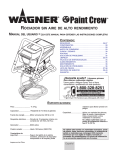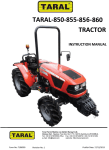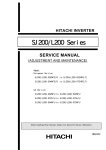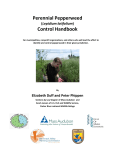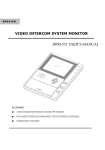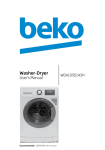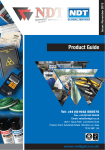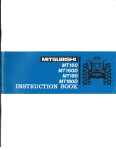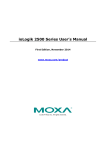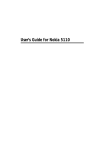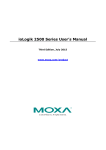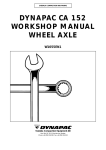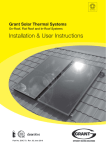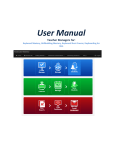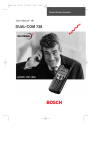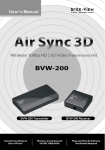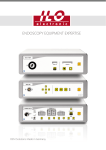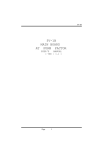Download User Manual. - taral tarım makine ve aletleri sanayi a.ş.
Transcript
TARAL - VST 818 TRACTOR USER INSTRUCTION MANUAL Taral Tarım Makina ve Aletleri Sanayi A.Ş. Maltepe Mah. Hastane Yolu Sok. No:1 P.K. 34010 Zeytinburnu/İSTANBUL Tel: +90 212 5679550 (Pbx) Fax: +90 212 6740679 / +90 212 6121239 e-mail: [email protected] website: http://www.taral.com Form No: KBK-7205207 Revision No: 0 Publish Date: 01.08.2012 INTRODUCTION We would like to thank you, our valuable customers, for purchasing this TARAL product. This instruction manual contains information on the operation, lubrication and maintenance of your tractor. The information contained is comprehensive and essential, and is designed to assist you, even-if inexperienced, in utilizing your Tractor. If the tractor is sold or transferred to another person, give this manual to any new owners or operators of the tractor as they may need the information contained. If you lose this manual, request a new one from the dealer. How well your Tractor continues to give satisfactory performance depends greatly upon the manner in which it is operated. It is, therefore, requested that this manual be read carefully and kept ready for use so that the operation and maintenance services will properly be carried out in order to keep the tractor in top mechanical condition at all times. Should any information as to your tractor be required, consult your local dealer or distributor stating the product model and its chassis and engine serial numbers of the Tractor concerned. We are sure you will be happy with your Tractor. NOTE: The drawings used in this catalogue are for demonstration purposes only and may slightly be different from your tractor. NOTE: Keep this tractor instruction manual in a safe and convenient place to avoid any damages or wearing. Read this manual carefully when you require any information or have concerns about operation and maintenance of your tractor. NOTE: Expressions such as LEFT, RIGHT, FRONT or REAR used in this manual should be understood in accordance with following rules: FRONT means the front grill end while REAR means the lifting arm end of the Tractor. LEFT or RIGHT means the left or right hand side of the Tractor looking forward from operator's seat. Right Front Rear Left TRACTOR TYPE INFORMATION Tractor Brand: Tractor Type: Tractor Variant: Tractor Category: Tractor Trade Name: TARAL 818D 818D 4WD AR T2 TARAL - VST 818 Manufacturer of Tractor: TARAL Tarım Makine ve Aletleri Sanayi A.Ş. Address: Maltepe Mah. Hastane Yolu Sok. No:1, 34010, Zeytinburnu, İstanbul Telephone: +90 212 5679550 Fax: +90 212 6740679 +90 212 6121239 [email protected] www.taral.com e-mail: web site: TRACTOR IDENTIFICATION PLATE It is located at the left side of the tractor tunnel sheet. SERIAL NUMBER Chassis serial number It is located at the right side of the transmission case specifically upper side. Engine serial number It is located at the right side of the cylinder block, specifically injection pump side. NOTES, CAUTIONS and WARNINGS NOTES, CAUTIONS and WARNINGS are used in this manual to emphasize important and critical instructions. They are used for the following conditions: NOTE............. An operating procedure, condition, etc., which is essential to highlight. CAUTION................ WARNING............... Operating procedures, practices, etc., which if not strictly observed, will result in damage or destruction of machine. Operating procedures, practices, etc., which if not correctly followed, will result in personal injury or loss of life. TAKING DELIVERY OF THE TRACTOR When your tractor is delivered, ask your dealer to perform the first operation and provide you information on instruction and maintenance. If you have further questions, please contact the factory. Make sure all components are installed and in perfect working condition before taking the delivery of the tractor. Make sure all accessories are provided, the tool box including all tools is available and no manual is missing. Documentation of the tractor: User Instruction Manual Log Book Warranty Card Service Center List THE LIFE OF THE TRACTOR Tractor is designed to operate for 10 years. The life of your tractor may be realized or even extended by observing the rules and methods described in this manual, performing scheduled maintenance before and after warranty period at authorized maintenan- ce centers and using original TARAL spare parts. WARRANTY All products manufactured by TARAL and purchased from authorized dealers and services are under warranty. We recommend you to use original TARAL parts supplied by authorized dealers or services. Damages resulting from faulty operation, insufficient or late maintenance, use of non-original spare parts or implements not allowed and are not covered under warranty. NOTE: The tractor may be operated with several implements; however, this manual may not give information about each possible implement to be used. Consult your dealer or the factory about the conformity of such implements which are not described in this manual, before using them. TARAL may not be held liable for the damages or unexpected losses that may result from the incorrect installation, handling of undescribed or unapproved implements and/or incorrect operation of the tractor. SAFETY One of the main concerns focused during the development and production of the tractor is operator’s safety. Design is composed of several safety issues. Despite all these precautions, accidents may still occur and most of them are caused due to the safety precautions neglected. The best way to prevent accidents is to be aware of the possible risks and precautions to be taken and behave accordingly. Prior to the operation of the tractor, operator must be aware and have a thorough understanding of the safety warnings and precautions described in this manual. All protective elements must be in place and undamaged, and if damaged they must be serviced immediately. Tractor must not be operated without the operator is seated. Ensure that all warning labels is in place and legible, and if not, replace the labels. Operator of the tractor must always be well-rested and alert and must not be under the influence of alcohol or drug. Persons who use prescribed medicines may not use a tractor without the permission or report by a doctor. PRECAUTIONS ON OPERATION OF THE TRACTOR ON ROAD Prior to the operation of the tractor, be sure that all functions described in this manual perform properly. In case you notice a loose bolt or any damage on some of the equipments or parts, stop the tractor immediately and do not turn back to working until the failure/problem is solved. Operator must know local traffic rules and laws and has a valid driving license for driving on road. Ensure that the plate is placed so that it is visible during travelling and all documents that may be necessary are around. Do not allow children to use the tractor or hitch any implement to the tractor. Be sure that PTO is deactivated, brakes are linked and the differential lock is released. Keep rotary warning light on when travelling on road, this will help other vehicles that are distant, behind a hill or out of the field of clear view to notice you easily. Safety frame must always be rolled out (unfolded) and in undamaged condition. Do not perform any modifications on the safety frame for any purposes. Always fasten your seat belts when using the tractor. Always operate and stop the tractor while you are seated. When safety frame (ROPS) is open, be careful while passing under bridges, canals, low-height structures or electric cables in order to eliminate the risk of banging into them, if there is risk, you can fold down the safety frame temporarily, when the obstacle is passed return the safety frame to its initial position and continue to travel. Tractor is only for 1 person; do not carry any other passengers on the fender, bonnet or other components of the tractor. Be sure that there is not any person in the circle of the tractor while maneuvering. Do not perform any adjustments, mounting or demounting while the tractor is operated. While mounting, removing or using an implement, be sure that there are no persons between the tractor and the implement. Do not attempt or allow others to attempt to operate the tractor or reach to the control levers from the area on which the implement is mounted. Never remove or mount the implements when the tractor is operated or the parking brake is not applied. Do not allow any person under the implement, when the tractor is operated and the implement is in use. Move the implement to the carrying position on road, fix and carry it without interrupting the driving and view of other travelling vehicles. Ensure that the glass of the lamps and signals are clean. Avoid operating the tractor close to the areas where fixed obstacles such as walls, fences, etc. are present as they may restrain the maneuver capability of the tractor. Do not use the tractor on neutral position, especially when operating on downward slope, be sure that the tractor is in gear. If the road is wet or slippery, pay particular attention. Lower your speed when approaching to hills. Signal before turning. Control the traffic on the intersections or while crossing; start crossing if the traffic is suitable. Do not try to pass over cars on road. If the traffic behind becomes busy, pull over at an appropriate place and give way to the vehicles behind. This tractor is compatible for both RH traffic and LH traffic drive. Check, and ask dealer if necessary to adjust, front lamps and mirror regarding local regulations in your country. TREATMENT OF A NEW TRACTOR All components of your tractor are subject to stringent checking during assembly in the factory. However, a new tractor should be carefully checked over by the operator himself for the first 25—50 hours operation, heavy duty work should be avoided. If heavy duty work is unavoidable, drive in a gear one stage lower than you would normally use, and run the engine at lower rpm. “IMPORTANT” 50 HOURS SERVICE When the tractor is brand new, after the first 50 hours of running, the following service, maintenance and checking should be carried out as specified below. 1. 2. 3. 4. 5. 6. 7. 8. 9. 10. 11. 12. Replace engine filter and engine oil. Replace transmission oil. Retighten all bolts and nuts, paying special attention to those for steering linkage and wheel. Check and adjust the fan belt tension. Check the wheels to see if their condition is good and tire pressure is correct. Retighten the cylinder head bolts and adjust valve clearances. Front axle diff. case and gear case oil replacement of 4wheel drive tractor. Clean the air cleaner element. Clean the fuel filter. Check the front hub for end-play. Check the battery electrolyte. Clean the hydraulic oil filter. This 50-hour Service is an essential procedure for keeping the tractor in top condition, so it must be done properly. CONTENTS CONTENTS SECTION 1. SAFETY PRECAUTIONS A. General Operating Safety Precaution ................................................................................ 1 B. Basic Safety Requirements for Maintenance ...................................................................... 1 C. Operation of the Tractor ...................................................................................................... 2 SECTION 2. EXTERNAL VIEW AND NOMENCLATURE OF EACH PART ...................................... 6 SECTION 3. INSTRUMENTS AND CONTROLS ................................................................................ 8 Ignition Key .............................................................................................................................. 9 Glow Signal.............................................................................................................................. 9 Glow Plug ................................................................................................................................ 9 Tachometer ............................................................................................................................. 9 Hour Counter ........................................................................................................................... 9 Battery Charge Warning Lamp ................................................................................................ 9 Oil Pressure Warning Lamp .................................................................................................... 9 Water Temperature Gauge .................................................................................................... 9 Fuel Meter................................................................................................................................ 10 Horn Switch ............................................................................................................................ 10 Rotary Warning Light .............................................................................................................. 10 Combination Flash and Turn Signal Switch ............................................................................ 10 Throttle Lever .......................................................................................................................... 10 Clutch ...................................................................................................................................... 10 Brake........................................................................................................................................ 11 Parking Brake .......................................................................................................................... 11 Foot Speed Control Pedal ...................................................................................................... 11 Power Take Off ........................................................................................................................ 11 Differential Lock ...................................................................................................................... 12 8-Speed Transmission ............................................................................................................ 13 4-Wheel Drive Shift Lever........................................................................................................ 13 Safety Starter Switch .............................................................................................................. 13 Trailing Attachments .............................................................................................................. 14 SECTION 4. OPERATION .................................................................................................................. 15 Before Operating the Tractor .................................................................................................. 15 Starting the Engine .................................................................................................................. 15 Starting in Cold Weather.......................................................................................................... 15 After the Engine is Started ...................................................................................................... 15 Driving the Tractor .................................................................................................................. 15 Stopping the Tractor ................................................................................................................ 17 Tread Adjustment .................................................................................................................... 17 Front .................................................................................................................................. 17 Rear .................................................................................................................................. 18 Rear Wheel Installation............................................................................................................ 18 Ballast Weight .......................................................................................................................... 18 Tire Pressure .......................................................................................................................... 18 Sound Levels .......................................................................................................................... 18 Operator's Seat ........................................................................................................................ 19 External Outlet Valve .............................................................................................................. 19 Front Axle Steering Adjustment .............................................................................................. 19 3-Point Linkage ........................................................................................................................ 19 Hydraulic System .................................................................................................................... 19 Position and Depth Control...................................................................................................... 20 External Hydraulic Service ...................................................................................................... 21 PTO Guard and Rear Hitch .................................................................................................... 21 SECTION 5. REGULAR MAINTENANCE GUIDE .............................................................................. 22 Service Schedule .................................................................................................................... 22 Service Schedule Chart .......................................................................................................... 22 Daily Inspection ...................................................................................................................... 22 1. Service (Every 50 hours of operation) ................................................................................ 22 50-Hour Service for a New Tractor .................................................................................. 23 50-Hour Service for Other than New Tractor .................................................................... 23 2. Service (Every 150 hours of operation) .............................................................................. 23 3. Service (Every 250 hours of operation) .............................................................................. 23 Maintenance Interval Chart...................................................................................................... 24 Lubrication Table .................................................................... ................................................ 25 Greasing Diagram.................................................................................................................... 26 SECTION 6. PREVENTIVE SERVICE INSTRUCTION ...................................................................... 28 Hood and Side Covers Opening/Closing ................................................................................ 28 Checking the Radiator Coolant Level ...................................................................................... 28 Coolant Replacement .............................................................................................................. 28 Precautions on Cooling System in Cold Weather .................................................................. 28 Antifreeze ................................................................................................................................ 28 Fuel System Air Bleeding ........................................................................................................ 29 Fuel Filter Air Bleeding ............................................................................................................ 29 Fuel Pump Air Bleeding .......................................................................................................... 29 Fuel Pipe Air Bleeding ............................................................................................................ 29 Fuel Filter Element Replacement ............................................................................................ 30 Cleaning the Fuel Tank ............................................................................................................ 30 Checking the Engine Oil Level ................................................................................................ 30 Engine Oil Replacement .......................................................................................................... 30 Engine Oil Filter Replacement ................................................................................................ 31 Injection Nozzle Inspection ...................................................................................................... 31 Cylinder Head Bolt Tightening ................................................................................................ 31 Valve Clearance Adjustment .................................................................................................... 32 Valve Clearance Adjustment Procedure .................................................................................. 32 Air Cleaner .............................................................................................................................. 32 Fan Belt Tension Adjustment .................................................................................................. 33 Battery...................................................................................................................................... 33 Booster Connection .......................................................................................................... 34 Proper Procedure for Booster Connection ........................................................................ 34 Proper Procedure for Removing Booster Cable .............................................................. 34 Proper Battery Service and Tips for Safety ...................................................................... 35 Checking the Electrolyte Level .......................................................................................... 36 Battery Recharging............................................................................................................ 36 Transmission Oil Replacement ................................................................................................ 36 Cleaning the Hydraulic Oil Filter ...................................................................................... 37 Checking the 4WD Front Axle Oil Level and its Replacement ................................................ 37 Checking the Oil Level ...................................................................................................... 37 Replacing the Oil of Front Axle ........................................................................................ 37 Cleaning the Radiator Screen ................................................................................................ 38 Cleaning the Radiator .............................................................................................................. 38 Cleaning the Inside of Radiator ........................................................................................ 38 Clutch Pedal Adjustment.......................................................................................................... 38 Brake Pedal Adjustment .......................................................................................................... 39 Differential Lock Pedal Adjustment .......................................................................................... 39 Throttle Lever Adjustment ........................................................................................................ 39 Hydraulic Control Adjustment .................................................................................................. 40 Position Control Adjustment .............................................................................................. 40 Hydraulic Pump Relief Valve .................................................................................................. 40 AC Generator (Alternator)........................................................................................................ 40 Starting Motor .......................................................................................................................... 41 Glow Plug ................................................................................................................................ 41 Fuse ........................................................................................................................................ 41 Trailer Plug .............................................................................................................................. 41 Illumination Lamps .................................................................................................................. 41 SECTION 7. STORING ........................................................................................................................ 42 Storage .................................................................................................................................... 42 Reoperation After Storage ...................................................................................................... 42 SECTION 8. WIRING DIAGRAM ........................................................................................................ 43 SECTION 9. SPECIFICATIONS AND DATA 44 .................................................................................... Engine ...................................................................................................................................... 44 Cooling System........................................................................................................................ 44 Fuel System ............................................................................................................................ 44 Lubrication System .................................................................................................................. 44 Air Cleaner .............................................................................................................................. 44 Governor .................................................................................................................................. 44 Electrical System .................................................................................................................... 44 Chassis Dimensions ................................................................................................................ 45 Clutch ...................................................................................................................................... 45 Transmission............................................................................................................................ 45 Power Take Off ........................................................................................................................ 45 Brake........................................................................................................................................ 45 Steering.................................................................................................................................... 45 Hydraulic System .................................................................................................................... 46 3-Point Linkage ........................................................................................................................ 46 Drawbar .................................................................................................................................. 46 Maximum Tire Load Capacity .................................................................................................. 46 Maximum Axle Loads .............................................................................................................. 46 Travelling Speed ...................................................................................................................... 47 Capacities ................................................................................................................................ 47 SECTION 1 - SAFETY PRECAUTIONS REMEMBER: "SAFETY" IS ONLY A WORD UNTIL IT IS PUT INTO PRACTICE Improper handling of the tractor could lead to an accident. Prior to the operation of the tractor, be sure to read this Manual carefully and have a thorough understanding of all of the contents. In particular, the instructions given in this section enti- tled "Safety Precautions" must be strictly followed. A. GENERAL OPERATING SAFETY PRECAUTION 2. 1. Observe all the safety precautions in this manual when operating the tractor. 2. Operate the tractor with suitable clothing that allows easy movement. Avoid loose jackets, mufflers, ties, scarves, or loose shirt sleeves to prevent from being caught by moving parts. It is recommended to have a fire extinguisher and a first aid kit near by. Operator must know the place and utilization of these equipments. 3. 4. 5. 6. Keep tractor steps clean to avoid accidents due to slippage. Dust, mud, snow, ice, etc. must be removed from the pedals and brakes as they may cause slippage. Cover the PTO shaft with a guard when not being used. Be sure to apply the brake and lower any attachment or implement before disassembling any part. Never adjust or service the tractor when it is in motion or while the engine is running. Always adjust the brake or clutch properly in accordance with the adjusting procedure in the instruction book. Do not remove the radiator cap while the engine is running. Shut down the engine and wait until it cools sufficiently. For removal, turn the cap to the first stop to relieve pressure. To replace the coolant, use the coolant recovery tank. Do not touch engine, muffler, exhaust pipe or exhaust manifold while the tractor is running or just after running, wait until these parts are cold before performing any procedures. 3. Always work when you are in good physical condition by taking sufficient rest to avoid overwork. 4. Do not allow children or adults having no knowledge of the tractor or tractor operation, to operate the tractor. 5. Never allow riders on the tractor, linkage drawbar or attachments while travelling and operating them. 7. Hydraulic oil or fuel escaping under pressure can penetrate the skin, causing serious injury. Before disconnecting oil or fuel lines, be sure to relieve all pressure. Before restoring pressure after repair, be sure all connections are tight and all hydraulic components are in normal condition. Pressure oil may not be observed visually. You may use a carton for detection purposes. If injured by leaking fluid, see a doctor immediately for proper treatment. 8. When refueling, be particularly careful first to stop the engine completely to prevent the fuel from igniting. Never refuel in the presence of an open flame or while smoking. Always use funnel when adding fuel and refuel only out of doors. When refueling is completed, wipe any spilled fuel off the tractor and securely fasten the cap of the fuel tank. B. BASIC SAFETY REQUIREMENTS FOR MAINTENANCE Always follow these maintenance instructions before operating the tractor: 1. Immediately repair the head lights and work lamps required to conform to traffic regulations where the tractor is operated. 1 11. Stop the engine and make sure the PTO shift lever is in Neutral before performing any of the following services, including: a) Removal of the propeller shaft between PTO and any attachment, Adjustment of PTO drive train and hitch. c) Adjustment or cleaning of PTO driven attachment. 12. The steering wheel always has built-in play to some extent, which is required for smooth working of sector gear and pinion gear. Always inspect the amount of the play. Do not operate the tractor if there is too much or too little play in the steering. 9. Before starting any work on electrical equipment or work that may cause you to touch the electrical part accidentally, first disconnect the battery cables. Never remove the rubber cap cover at the positive terminal of the battery cable end. Before connecting the battery to the charger, make sure that the charger switch is in "OFF" position. Be sure to connect the charger to the correct terminals on the battery, (positive to positive, negative to negative). A great amount of hydrogen gas is generated by the battery when it is being charged. Take precau-tions against fire: do not have any exposed flame in the area where you are working. Be sure not to cause any leakage of the electrolyte, since it will corrode the skin or clothing. In case of accident as described below, immediately seek first aid, and see a doctor immediately for proper treatment. a) If the diluted sulfuric acid from the battery has gotten into the eyes: Cleanse the eyes with a lot of clean running water for more than 15 minutes, while opening the eyes widely. b) If diluted sulfuric acid from the battery has been swallowed: C. OPERATION OF THE TRACTOR Before driving the tractor, follow these rules: C-1 Before Starting and Driving the Tractor Operate the tractor only when seated properly in operator's seat and keep a firm grip on the steering wheel at all times. Never attempt to perform any operation of the tractor from anywhere else, on or off the tractor. Always wear a "hard hat" when operating the tractor. Do not attempt to jump start the tractor, always start the engine with ignition key. Rinse the mouth with clean water immediately and drink a lot of raw eggs or milk. Lie down quietly. c) d) If diluted sulfuric acid has gotten on the skin or clothing: Wash away the diluted sulfuric acid completely with a lot of clean running water and neutralize with soap solution. Then rinse with water. If the diluted sulfuric acid is spilled: Wash away with a lot of water or neutralize with slacked lime or bicarbonate of soda. 10. If you intend to use the tractor for applying pesticide, wear suitable protective gear such as goggles, mask gloves, etc. Avoid direct contact with or breathing agricultural pesticide as they may be dangerous for your health. For further information, consult the manual of pesticide. C-2 Starting and Driving the Tractor Always operate the tractor at the proper speed which enables you to keep the tractor under your complete control. 2 Never attempt to jump on or off a moving tractor. LOW HIGH To start travelling, lower the engine speed and release the clutch pedal slowly. Abrupt releasing causes the tractor to jump off. When starting the tractor, operating any attachment or engaging the PTO make sure that no one is in the way, especially children. Before leaving the tractor, stop the engine, remove the key, apply the parking brake and make sure that the engine has come to a complete stop, and any attachment is completely touching the ground. KEY When starting the engine in an enclosed area or building, ensure proper ventilation by opening the doors and/or windows to prevent carbon monoxide inhalation. Mount the extension exhaust pipe on the tractor if has a cabin. LOCK Slow down when operating the tractor on rough ground . 3 If ROPS is folded, level it down, fasten the seat belt before using the tractor and keep it fastened while in operation. Never operate the differential lock while driving at high speed or travelling on the road. For driving the 4-WD tractor on the road, be sure to place the 4-WD shift lever in OFF position. C-4 Steering and Turning the Tractor Slow down your tractor and disengage the differential lock before going into a turn, being careful to prevent any attachment mounted on the front or rear from hitting anyone or anything. C-5 Towing and Operating on Hills For towing work on downward slope, place the shift lever in low speed and use engine brake. Never try to reduce the speed with brake only. Towing a heavy object on a hill is highly hazardous. Widen the tread of the tractor and mount the wheel weight or chassis weight to increase the stability and operate with extra caution. If necessary, connect front wheels drawbar (4WD). It is not recommended to use tractors without ROPS. When operating the tractor on higher a steep slope or flat ground, be sure not to suddenly steer, brake or operate clutch or attachments. C-3 Travelling on Roads and Streets Do not operate the tractor at the edge of cliff or steep slope. Be particularly careful right after the rain when soil is soft and may give way easily. If necessary, connect front wheels (4WD). For travelling on roads and streets be sure to lock both brake pedals together before driving to prevent either brake from acting independently. 4 For towing, be sure to use the drawbar only. Set the When towing or running on a steep downward slope, be hitch point below the center line of the rear axle. When using a chain, never try to move forward abruptly. When using a long chain or cable to hitch the tractor to the load, drive the tractor forward slowly until all slack is taken out. sure to apply the engine brake to keep safety speed. Never run by inertia (coasting) with main shift lever placed "NEUTRAL' position or the clutch disengaged. C-6 Using Attachment To mount or operate attachments, follow the instruction manual for the particular attachment for safe operation. Avoid operating the tractor on an extreme slope that appears hazardous, when forced to operate on such slope, use extra care. Driving forward out of a ditch or mired condition or up a steep slope could cause tractor to tip over rear-ward. Back out of such situation if possible. If the situation does not permit you to back out, use the front wheel weight or the chassis weight for balancing the tractor lengthwise. Also in case any extra heavy rear mounting attachment is used, try to obtain better balance in this manner. When using agricultural chemicals with an attachment on the tractor, always follow the Instructions in the manual for the attachment as well as the Instructions provided by the chemical manufacturer. When backing down a slope in reverse gear or going up the grade in forward gear, never operate the clutch, brake, throttle lever or steering wheel abruptly. Be particularly careful on slippery roads. C-7 Roll Over Protective Structure (ROPS) In any case of towing (by use of a rope or by hanging up the front), be sure to place the both main shift lever and sub shift lever at "NEUTRAL' position so long as the rear wheels are on the ground. * These shift levers shall not be placed at any other speed range. We strongly recommend a ROPS (Roll Over Protective Structure) install to your tractor. It must not be removed even temporarily. It must not be folded when travelling. It is not recommended to utilize additional elements to perform drilling, welding or reinforcement on the construction, this procedure will weaken the construction. If any damage is observed on the construction, it must be repaired at a technical service or replaced. When starting the engine by towing the tractor with a battery as discharged, be sure to place the main shift lever at the 3rd speed step and the sub shift lever at the high speed step, then operate the clutch slowly. * Never place the sub shift lever at the low speed step. Exercise good care in seat belt Installation as regard belt strength and the bucket, which must not be broken off or disconnected. For further details, ask your authorized technical service. When towing the tractor, be sure to keep the safety speed. It is advisable to operate at 10 km/h or less in towing the tractor under 20 HP and at 15 km/h or less in towing the tractor over 20 HP. 5 SECTION 2. EXTERNAL VIEW AND NOMENCLATURE OF EACH PART The above photos show TARAL-VST 818. 6 1 2 3 6 4 5 1. Battery 2. Radiator cap 3. Air cleaner 4. Engine oil filler cap 5. Fuel tank cap 6. Alternator 12 2 4 3 1. Nozzle 2. Fuel Injection Pump 3. Air Cleaner Inlet 4. Radiator Hose For opening the bonnet, remove backward the hook on the rear side of the bonnet. When closing the bonnet, be sure to confirm the bonnet is secured. 7 SECTION 3. INSTRUMENTS AND CONTROLS 45 5 1 7 2 2 7 3 6 1. Fuel Meter 2. Tachometer 3. Water Temperature Gauge 4. Combination Switch Indicators 5. Stop Switch 6. Head Lamp and Horn Switch 7. Ignition Key 2 1 1. Throttle Lever 2. Fuse Box 8 TACHOMETER AND WARNING LAMPS Tachometer Fuel Meter Water Temperature Indicator Battery low Warning Lamp Alternator Charging Indicator Oil Low Pressure Warning Lamp Glow Plug Indicator Hour Counter Heat position………………… Power applied to the glow plug OFF position ........................ Engine and all lights turned off ON position.......................... Engine running and electrical circuit energized. START position.................... Starts the engine then key returns to "ON" position. The tachometer indicates engine rpm. Indication of Meter R.T.O. shift rotation 2340 at PTO 1st shift 540 rpm 1793 at PTO 3rd shift 1000 rpm CAUTION BATTERY CHARGE WARNING LAMP Be sure to remove key whenever tractor is not in operation. When the ignition key is set to "ON", this lamp lights up. When the battery is being charged normally while the engine is running the lamp should go off. If the lamp continues to light, stop the engine immediately and see your dealer. GLOW SIGNAL When the ignition key is turned ON, the Glow Signal lights up in the Instrument Cluster, indicating that the engine is preheated. OIL PRESSURE WARNING LAMP When the ignition key is set to "ON", this lamp lights up. When oil is circulating normally while the engine is running, the lamp turns off. If the lamp still lights up after the engine has been started, stop the engine immediately and check the engine lubrication oil level. If oil level is insufficient, add suitable oil; If the oil level is OK, see your dealer. GLOW PLUG The engine is fitted with speed heating sheathed glow plug which preheat the combustion chamber so that the engine may be started easily even in cold weather. HOUR COUNTER Every 1 hour of engine operation, the counter shows 1 units of increase. 9 WATER TEMPERATURE INDICATOR COMBINATION FLASH AND TURN SIGNAL SWITCH When the temperature of the cooling water exceeds 110°C (230°F). Two flashing lights are located on the rear of the fenders. Anytime the tractor is operated on public roads, the flashing lights should be used. The flasher switch is installed on instrument panel and it is used when making a turn to right or left. Turning the switch leftwise causes to flash the left-hand-side turn signal, and turning it rightwise causes to flash the righthand-side turn signal, respectively. When this occurs, lower the engine speed to about 900 rpm immediately and wait until the warning lamp goes off. Then stop the engine and check the amount of cooling water, the fan belt tension, the wiring, the temperature gauge unit. THROTTLE LEVER WARNING Be especially careful of the removal of the radiator cap. Throttle Lever FUEL METER Indicates remaining fuel. When the pointer comes over the "E" position, fill fuel as soon as possible. HORN BUTTON Horn is effective while ignition key is in "ON" position. Horn switch is in the combination switch provided for the head lamp and operates when the switch is pressed down. When the throttle lever is pushed forward, the engine speed reaches the maximum. The speed range controlled by lever is 900 to 2900 rpm (with no load). When the PTO gear is shifted to "1st" at 2700 rpm (rated engine rpm), the PTO shaft rotates at 623 rpm. CLUTCH Horn Button Rotary Warning Light 1 rotary warning light is installed on the safety frame of the tractor. Operates when the switch on the left fender is pressed down. Clutch pedal 10 When disengaging clutch you are advised also to lower the engine speed. The life of the clutch depends on the operating habit of the user. The clutch works in combination with the PTO. FOOT SPEED CONTROL PEDAL CAUTION Lowering the speed, when the tractor is overloaded, by half engaging the clutch or changing gear at high speed will damage the clutch lining. Disengaging must be performed completely in one clean quick movement with the engine revolution lowered as much as possible. NOTE When the tractor is not used, the clutch should be disengaged by depressing the clutch pedal and the clutch lever should be hooked so that clutch linings will not get stuck. BRAKE Brake pedal Foot speed control pedal The foot speed control pedal is installed on the right side of the step. When the hand throttle lever is in the idling position, the engine speed can be controlled freely within the range by depressing the pedal. NOTE When the hand speed control lever is in a high rev. position, the foot speed control pedal also moves into the position for those revs. When this is done the revolution cannot be controlled by means of the foot pedal within the range below the rev. set by hand lever. The brake is of internal expansion type and is dirt and water proof. There are two pedals provided on the right side of the transmission case which are linked together by a plate. The brake is operated by depressing these pedals. To stop the tractor, lower the engine revolution, depress the clutch pedal and then depress the brake pedal. For turning in a confined space the right and left axles can be braked independently by removing the plate linking the right and left brake pedals. When travelling at high speed or on roads make sure that the right and left brake pedals are linked by means of the locking plate. When starting to travel on roads after one of the brakes has been operated more often than the other, check the balance of the right and, left brakes beforehand. It is necessary to check brake balance once a week. If you fail to check the brake balance to link the right and left brake pedals, there is every likelihood that an accident will occur. WARNING While travelling on roads, be sure to link the both right and left brake pedals. 11 POWER TAKE OFF By operating the PTO shift lever located on left hand side of the transmission case, the three PTO speeds can be selected. When shifting the PTO shift lever, lower the engine speed , depress the clutch pedal fully to interrupt the power from the engine and make sure the machine is brought to a complete halt. First .......... 623 rpm @ 2700 engine rpm Second .... 919 rpm @ 2700 engine rpm Third ........ 1506 rpm @ 2700 engine rpm Standard PTO speed (PTO-1) DIFFERENTIAL LOCK 540 rpm @ 2340 engine rpm 1000 rpm @ 1793 engine rpm CAUTION Differential Lock 1. When using the implement in the field with many stones or stumps or hard soil, where a lot of shock will affect on, care should be taken so that the tractor and implement will not be damaged. 2. When using implements driven by PTO shaft, be sure to refer to implement manuals and operate them exactly as instructed. 3. When any implement is towed by the tractor, care should be taken so that the universal joint does not form an angle of more than 15°. 4. When the tractor is working with an impact load, correctly adjust the slip clutch on the implement side or use the shear pin of proper material so that the PTO is not overloaded. 5. To reduce the thrust load to the PTO driven shaft as much as possible, it is advisable to run a test operation with an implement without any load. 6. Lubricate the PTO driven shaft well. 7. Avoid using a square-shaped drive shaft where practicable. This device links the right and left wheels in the transmission and rotates them at the same speed to prevent either wheel from slipping or to increase traction force. Engaging the Differential Lock Before the tractor slips and the speed is lowered, depress the pedal with your right foot and engage the differential lock. If the differential lock does not engage at the first attempt, repeat the operation more forcibly. If it still does not engage, lower the engine speed and after disengaging the running clutch, repeat the whole operation as described above. If either of the left or right wheel has already begun slipping, turn the throttle lever to the idle running or disengage the clutch, then depress the differential lock pedal. Make sure that the pedal is fully depressed. The further the pedal is depressed, the better the lock is in effect. NOTE Removing your foot off the pedal automatically releases it, however if it is hard to release, depress either side of brake pedal instantaneously. How to Release the Differential Lock Immediately after the right foot is moved off the pedal, the differential lock is automatically released by force of the spring. However, it must be remembered that the lock may not be released under special conditions. In this case, the right and left brake pedals should be quickly and alternatively depressed, then, the differential lock will be set free. If the same occurs while plowing, the brake pedal of the land wheel side should be applied. The lock will be let out. When the both right and left brakes are linked for towing a trailer, operation of the steering handle to right and left allow the lock to be free. When the tractor is stopped with the differential lock applied, reverse running with a jerk can release the lock. 8. Special care should be given to the yoke position so that the driven shaft is well balanced. CAUTION Avoid using the differential lock when operating the tractor at high speed or running on a road. 12 8-SPEED TRANSMISSION 4-WHEEL DRIVE SHIFT LEVER The gear shift positions are as shown in the diagram below. By combination of the Main and High-Low shift levers, six forward speeds and two reverse speeds can be obtained. The first, second, and third forward speeds and first reverse speed can be obtained with High-Low shift lever in the LOW position, and the fourth, fifth, and sixth forward speeds and second reverse speed can be obtained with the High-Low shift lever in the HIGH position. The 4-wheel drive shift lever is located on the right side of the transmission case. 4-wheel drive will be engaged by pushing the 4-wheel drive shift lever forward. With the 4-wheel drive engaged, proper power will become available for the following cases: 1. For the operation on inclined ground, wet field or sandy soil. 2. For the operation with front end loader, trailer or plough attached. 3. In order to prevent lunging forward during rotary tilling operation on hard soil. CAUTION 1. Operate the 4-wheel drive shift lever only after depressing the clutch pedal. 2. Be sure to place the 4-wheel drive shift lever in "OFF" position for travelling on road. 1. speed 4. speed 2. speed 5. speed SAFETY STARTER SWITCH LOW The Tractor is equipped with a safety starter switch to prevent an accident in starting the engine. By placing the High-Low shift lever in NEUTRAL, the speed can be obtained with the HighLow shift lever in the HIGH position HIGH R 1st Speed R 2nd Speed Main Shift 3rd Speed 6th Speed High-Low Shift NOTE To shift the gears-, lower the engine speed and depress the clutch pedal to disengage the transmission clutch. When reversing gear, first stop the tractor, then shift the gears. 13 TRAILING ATTACHMENTS Front Hitch The tractor has a front hitch attachment. Hitch must be assembled as per side picture. To assemble hitch (“1”) first, user must disassemble front weights from chasis. All necessary parts are provided with tractor. Use M10 x30 bolts and nuts to fix hitch shown on right side with numbers (“2”) and (“3”) respectively. When assemblying you can use tools given with tractor. During coupling equipment to front hitch always use pin provided by tractor. Do not replace any part with any other similar parts. After coupling equipment be sure to secure pin (“5”) with safety pin (“6”). Front Hitch Assembly Respect axle loads while using front hitch. Use front hitch to push equipments, never use front hitch to pull. If it is necessary to pull, use rear hitch. Rear Hitch The tractor is fitted with a rear trailing attachment, ISO category, which is used to attach agricultural implements and for trailing from one to two axles The height of this device (“H”) can not be adjusted, it is fixed. Rear hitch (“2”) is fixed on hitch bracket (“1”) with 4 qty of Ø18 pins (“4”) and 2 qty of M12x40 bolts (“5”). Also 2 qty side brackets (“3”) are supporting hitch which are fixed to chasis through 4 qty of M12x50 bolts (“6”). Hitch has an id plate shown as (“7”) which you can refer in case. All necessary parts are provided with tractor and already assembled. Never try to disassemble these parts or replace parts with similar parts. If parts are broken or damaged replace them with original parts in authorized service to maintain proposed performance. It is necessary to make a special assembly with a specified torque for these parts. Since users can not estimate these specs respect to authorized services and never attempt to work on these parts particularly. During coupling equipment to rear hitch always use pin provided by tractor. After coupling equipment be sure to secure pin (“8”) with safety pin (“9”). Respect axle loads while using rear hitch. Rear Hitch Assembly 14 SECTION 4 - OPERATION STARTING IN COLD WEATHER BEFORE OPERATING THE TRACTOR 1. The fuel injection pump of this engine adopts the mechanism to ensure easier engine start by sufficient injection of fuel when the throttle lever is fully pushed. Before operating the tractor, read this instruction manual carefully and learn it correctly. The manual has been prepared for achieving tractor's maximum performance and safety for your work with this tractor employed. 1. Check the fuel level in fuel tank and replenish as necessary. 2. Check the levels of engine oil, transmission oil, and front drive differential. 2. To start the engine especially in cold weather fully push the throttle lever, heat the glow plug enough and crank the engine. CAUTION After the engine has started confirm that the engine is running smoothly listening carefully to ascertain if nothing abnormal sounds, and inspect for oil and water leakage. NOTE 3. Check the lubrication at every specified point on the chassis. 4. Check each bolt and nut for tightness. 5. Check the coolant level in radiator. In case fuel runs out, be sure to bleed the fuel system after refilling the fuel tank, otherwise the engine may not be started (or even stops soon after started). 6. Check the fan belt tension for water pump, alternator-generator and cooling fan. 7. Check the air pressure in tires. 8. Check every indicator lamp on instrument panel for operation. WARNING Do not use starting aids such as Gasoline or Ether in the air intake. Explosion may result. STARTING THE ENGINE 1. Always get on the tractor from the left side, since the right side is the emergency exit. When you get off, do not lean on the hand lever, mirror, mirror lever, pedals, etc., if you need to lean on something, you can either use the handle on the left fender or steering wheel. 2. Keep the parking brake applied. 3. Place the main shift lever, High-Low shift lever and PTO shift lever in NEUTRAL. 4. Set the throttle lever midway between its idling and high speed positions. 5. Turn the ignition key to "ON" position, And then see that oil pressure warnings as well as battery charge warning lamps go on. 6. As soon as the ignition key is on, the glow signal is on in the instrument cluster indicating heating and when the glow signal is off turn the ignition key to 'start' position to start the engine. 7. Immediately after starting, release the ignition key. The key will return to "ON" position automatically. 8. Check the oil pressure and battery charge warning lamps to see they went off. If not, stop the engine immediately and inspect. 9. Perform warm up run at about 1500 rpm for about 5 minutes. AFTER THE ENGINE IS STARTED 1. Check the oil pressure and battery charge warning lamps to see they went off. If the lamp "does not go off, immediately pull the throttle lever all the way backward and turn the starter key counter clockwise to shut down the engine, and locate the cause to correct. CAUTION 1. Particularly, by starting the engine while oil pressure is too low, serious trouble could occur because of insufficient lubrication. 2. Rotate steering wheel to see that front wheels turn to desired direction. DRIVING THE TRACTOR 1. With the engine running, hold the tractor with the brakes if necessary. 2. By pulling hydraulic control lever backward, raise the implement. WARNING Raise or lower the implement with sufficient caution against any obstacle around. 3. Bring the engine speed to about 1500 rpm (warm-up run). CAUTION 4. Depress clutch pedal all the way. 1. Use of the starter should be limited for about 10 seconds per trial. If it is not successful, wait for about 10 seconds before another trial. Using the starter intermittently without waiting for certain period of-time, can cause the battery to run down. 2. Do not turn the starter while engine is running. to the starter failure. 3. 5. Move each shift lever to desired position. 6. While travelling, interlock left and right brake pedals with locking plate so that they are applied simultaneously. NOTE: It can lead Be sure to perform the warm-up run regardless of the climate. Engine Travelling before engine gets warm, shortens the engine life. 15 When you are working with the tractor or travelling on road, be careful that the engine speed is between the max. torque range (1500~1700 rpm), this range also ensures the most efficient and economic operation. RULES TO AVOID TOPPLING TO THE SIDE • RULES TO AVOID TOPPLING BACKWARDS • • Do not load 3P linkage arms. Use only and only rear hitch to pull loads. To pull from a high point may result serious injuries or even death. Apply loads only on trailer hitch. Use front weights to balance tractor when carrying heavy loads. When moving forward and increase speed gradually. Do not increase engine speed too much and do not disengage clutch. If tractor is connected with a heavy load or stationary object improper use of clutch may result toppling of tractor. If front side of tractor ramps up, slow down and disengage clutch if necessary. If tractor stcuks in mud or sticks to ground do not try to move forward. Elevate equipment if exists and move backwards. If not possible puyll with another tractor. If you stuck in a ditch if possible move backwards. If you move forwards go slowly and carefully. If stucked in a ditch you can go forward slowly if in case equipments located opposite side of slope. When driving upwards keep tractor on gear always, do not try to drive in neutral or clutch dis-engaged. To shift gear, proper gear selection and start movement chose flat surfaces. Do not change gear while climbing or descending slopes, keep on moving, if necessary re arrange on a flat area. Chose flat areas to park tractor. • • • • • • • • • • • Adjust tread to maximum permitted fort he work being performed Lock pedal brakes to eachother before driving on the road. Drive at a suitable speed depending ont he land and the work being performed. Turn slowly and with big radiuses. Avoid tractor from being swinging, you may lose steering control. Do not trail heavy loads exceeding limits. Tractor may run out of control in downwards slopes or bend around hitch point. Do not apply sudden brake, apply brakes smooth and gradually. When moving downwards slopes use engine brakes always and use same gear as used on climbing upwards. Engage 4WD, in this way you may have braked foour wheel. Do not attempt to change gear or pass through neutral while climbing upwards slopes. In high sloped areas risk of toppling while going upwards or downwards is much more less with respect to moving cross. Do not try to pass from high sloped areas. If necessary avoid passing through holes, sags and similar damaged surfaces. Avoid from tree roots, bumps and elevated zones that are especially on slope side. Keep tractor always behind slipping line when working near by ditches and stacks. Keep safe far from ditches, stacks, embankments and wet zones like riversides that have risk of collapse. If it is necessary to pass from high sloped areas, do not turn upwards to slope side, if there is no other way and obligatory slow down and turn with a big radius as much as possible. Pass slope directly, if possible pass upwards or downwards but never cross. When passing upwards or downwards always keep heavy side of tractor on upper side of slope. • • • • • • • • • • 16 10.While operating on downward slope, use the engine brake. Do not place the main shift in the “NEUTRAL” position. WARNING For travelling at high speed, interlocking the left and right brakes is particularly essential. Be sure not to travel at high speed with left and right brakes being independent to each other (not being interlocked). 11.For towing, be sure to use the drawbar only. Set the hitch point below the center line of the rear axle. CAUTION 7. Do not attempt to stop tractor using brakes, which may cause failure of transmission internals or prematured wear of brake linings. STOPPING THE TRACTOR 1. By pulling throttle lever, reduce engine speed. 2. Depress clutch pedal all the way. 8. To avoid damaging brake or transmission system, be sure to release the parking brake before travelling. 3. Keep the brake depressed until the tractor comes to a complete stop. 9. While increasing the engine speed gradually, release the clutch pedal slowly. 4. Move PTO shift lever to NEUTRAL. 5. Move main shift lever to NEUTRAL. 6. Remove foot off the clutch pedal slowly. 7. Stop the engine by operating 'STOP' switch provided in the panel. WARNING 1. Release the clutch gradually. Releasing it suddenly is hazardous causing the tractor to lunge. 8. Apply parking brake. 9. Push hydraulic control lever slowly forward to lower implement to ground. 2. Before travelling backward, be sure to check for any obstacle behind the tractor. 10.Remove the key. 3. For travelling on public road or working" at high speed, be sure to lock the left and right brake pedals with locking plate so that both brakes are applied simultaneously. 4. During high speed operation or travelling on road, do not use differential lock. The 4-wheel drive shift lever and PTO shift lever should be placed in "OFF" and "NEUTRAL' positions respectively. 11.Always get off the tractor from the left side, since the right side is the emergency exit. When you get off, do not lean on the hand lever, mirror, mirror lever, pedals, etc., if you need to lean on something, you can either use the handle on the left fender or steering wheel. CAUTION 5. While travelling, remove your foot off the clutch or brake pedals. 1. Be sure to always apply the parking brake while the tractor is in parking or standing. 6. Independent use of left or right brakes should only be allowed for low speed operation. 2. Select flat and level ground for parking. 3. Apply blocks to the front or to the back of rear wheels on the slope. CAUTION TREAD ADJUSTMENT For travelling with 3-point linkage attached, tie it with belt or the like for prevention of swinging of the lower link. FRONT: 4-wheel drive front tread is as shown below. Thread: 31 in. (785 mm) ve 36.4 in. (925 mm.) 7. If any implement is mounted, turn the tractor slowly paying particular care for the space. 8. Do not make a sharp turn at high speed. the engine speed before turning. Be sure to lower 925 mm 9. Before starting the operation on slope, check for the existence of stone, irregularity or other dangerous factors which could lead to an accident. Do not operate the tractor at steep slopes as it may cause the vehicle to roll over. 17 (36.4 in.) 800 mm (31.5 in.) 785 mm 940 mm (37 in.) (31.5 in.) NOTE BALLAST WEIGHT 1. Axle housing and gear case tightening torque: 6 ~ 7 kgm ( 43 ~ 50 ft.lb ) The slipping not only damages the tire but also results in working inefficiency and greater fuel consumption. Slipping, therefore, must be minimized as much as possible. For that purpose, ballast weights are available as optional implements. It is recommended that the tractor be provided with ballast weights when working in the place where slipping is likely to occur. The ballast weights can be attached on rear wheel discs and the front chassis. Balance can also be applied by putting water into the tires instead of using the ballast weights. For this operation, pay particular attention to the temperature and air pressure. In cold weather where the temperature drops below (32°F), use water with antifreeze and never fill th e tire with only water. It is of course possible for you to employ a combination of water in the tire and ballast weights. Consult your dealer concerning the water injector and method of injection. Never drive over 5km/h speed when tires filled with water. 2. Front tire tightening torque 4-WD 8.5 – 9.5 kg.m ( 61.4 ~ 68.6 ft-lb ) REAR: The rear tread can be adjusted by changing the left and right wheels to each other. Standard thread AG tire Max. Thread 890 mm (35 in.) 730mm (28.75 in.) 730mm (28.75 in.) 890 mm (35 in.) Rear wheel weight: 4-WD 20 kg (44.1 lb) x 1 = 20 kg (44.1 lb) Chassis weight: 4-WD 17.5 kg (35.6 lb) x 4 = 70 kg (154.3 lb) TIRE PRESSURE CAUTION 1. Avoid widening front tread of the 2 and 4-wheel drive tractor by switching the right and left front tires as this may cause serious troubles on the steering linkage. 2. Check at frequent intervals to make sure that the rear and front wheel are tightened securely to specified torque and that the axle housing and gear case are secured each other to specified torque. Tire pressure should be checked frequently. Either too high or too low pressure results in deterioration of the tire. To properly maintain the tires, make sure that the tire pressure is checked at least once a week. Tire size Ply 5.00-12 5.00-12 64 REAR WHEEL INSTALLATION Front Make sure that rear tires are mounted so that the lugs on the tire form the staggered V's in series as viewed from the front of the tractor. Valve type 2.2 kg/cm2 (31.9 psi) Rear CAUTION Std. pressure 7.50-18 8 1.0 kg/cm2 (14.5 psi) 1. If the tractor must be jacked up when replacing the tires, jack up the front side of the tractor specifically from the bottom of the front support, and the rear side from the rear hitch and right at the middle. 2. Before jacking up the tractor, place it on a smooth ground, apply parking brake, apply gear and make sure that there is no person around and jack up the tractor only as much as needed. 3. Do not attempt to jack up the tractor from both sides at the same time. Make sure that the tractor is touching the ground at least at 3 points. SOUND LEVELS As per 2009/63/EC Annex-VI, the noise level measured at the tractor is 77.26dB, and as per 2009/76/EEC the noise exposed by the operator is measured on the left side 85.7dB and on the right 85.4 dB. According to the NIOSH criteria, the maximum exposure must be limited to 8 hours for 85dB, without additional precautions are taken. Persons who are exposed to noise must take additional precautions according to their exposure time and the level of the noise. We advise you to wear suitable earphones for such cases. 18 NOTE Air pressure of the tires must be changed according to the loading weight on the tires. For more details, please call and talk with local dealer. OPERATOR'S SEAT 3-POINT LINKAGE It is cushioned seat with spring support for maximum operator comfort. Vibration levels of the seat measured for lightweight and heavy operators as per 78/764/EEC are 1.24m/s2 and 1.16m/s2, respectively. This tractor is provided with a 3-point linkage of Category-1 as a standard equipment. The implement which is to be mounted, must match the 3-point linkage of Category-1. In order to reduce the vibration levels: 1. Try to keep the vertical position adjustment of the seat at medium level. 2. Adjust the spring tension according to the weight of the operator by twisting the screw at the back side. NOTE When an implement is towed with the linkage drawbar installed on lower links, the lower links should always be kept horizontal. SPOOL VALVE OULET HYDRAULIC SYSTEM Your tractor is provided with the live hydraulic system in which a hydraulic pump is driven directly by the engine camshaft and always makes the oil circulate to exert the hydraulic pressure while the engine is running. The hydraulic oil of exclusive use is reserved in the transmission case and passed through the oil filter, thus ensuring effective operation. Position control, flow control (down speed control) and lock of the implements are possible with the hydraulic control lever installed on the right side of the seat. For external service, the hydraulic pressure can be taken out by fitting an adapter plate to the delivery pipe installed on the left side of the seat. CAUTION When using an implement which requires a mass amount of oil, the oil level on the transmission case of the tractor may drop below the minimum baseline. If this happens, components of the tractor may be damaged due to insufficient lubricating. To prevent this from happening, be watchful of oil level when using hydraulic outlet valve; and if necessary, replenish oil using the oil recommended for transmission. External outlet valve FRONT AXLE STEERING ADJUSTMENT Rotation levels of the front axle are adjustable. The length of the stopper is adjusted by tightening and loosening the No.1 bolt shown in the side picture, after adjustment is done No.2 contra nut is tightened to secure it. Recommended value for the distance from the upper stopper to the cast (A distance) is 22 mm (0.866 in.). CAUTION Reducing this value, increases the rotation angle reducing the lateral stability of the tractor, this may cause the tractor to roll over on turnings or inclined lands. So do not adjust it below the recommended value. 19 POSITION CONTROL Stopper B Stopper A Flow Control Knob Position Control lever Position control is provided for determining and holding the position of an implement as desired by means of a lever. To use the position control, operate the control lever in the following manner: Pulling the lever backward will cause an implement to rise. Pushing forward will cause an Implement to lower by its own weight. Placing the lever at certain position, causes implement to move to and stop at the height corresponding to the position of the lever. For holding the height of the Implement at certain position constantly, use stopper A to fix the lever position, which will make the lowered position of an implement to be maintained at the constant height. Position control lever can also be operated to control depth during driving. When an obstacle is encountered, the lifting arms moves upward automatically and returns to its initial position after the obstacle is passed. This functions provides easy use and operation without the need to change lever adjustment during driving. CAUTION Stopper B is provided to prevent the hydraulic safety valve from being actuated. Be sure not to move It for any purpose other than hydraulic power take off. For returning the displaced stopper B to its original position, first oper- ate the position control lever in upward direction, then from the position where actuating sound of the safety valve starts, slide the stopper B downward by 5 to 8 mm and tighten it there. The tractor provides the flow control knob which controls the lowering speed of the implement. It is located in front of the hydraulic case under seat. When the knob is turned clockwise, the lowering speed slows down, and when further turned, the control valve is closed. As a result, the implement will be held in its position and will not move downward any further. Turning the knob counterclockwise increases the lowering speed. NOTE Adjust the lowering speed according to the type of an implement and operating conditions. Rotary tiller operation Lowering speed . . . . .Slow Plow operation Lowering speed . . . .Fast WARNING 1. For travelling on the road, be sure to turn the flow control knob all the way clockwise and lock it there. 2. During tine replacement, grass or straw removal of rotary tiller, or during inspection of implement for the safety, place the lift arms in upward position, shut down the engine and be sure to lock the flow control lever. 3. When an implemented is mounted on the 3-point linkage levers, do not stand or allow others to stand between the implement and the tractor. If there is an adjustment, removal or mounting is required, lower the implement slowly to the ground, apply the parking brake and proceed afterwards. RECOMMENDED IMPLEMENTS There are a number of implements available which match the 3-point linkage system of the tractor. When mounting and using these implements, it is very important you load the tractor according to the permitted axle loads, otherwise unexpected failures or accidents may occur. For main implements that can be mounted to the tractor, use the recommended implements listed below: 1. 3 or 2 disc 8" plough. 2. 4 row and 6 row, 16 and 24 blades 850mm and 1000mm rotary tiller. 3. 200lt mounted pesticide application equipment. 20 EXTERNAL HYDRAULIC SERVICE The hydraulic pressure can be used to control the implement installed to the tractor. Relief valve cover NOTE When taking out the hydraulic pressure, be watchful of oil level in the transmission case and sticking of the pump to be caused by oil shortage. Hydraulic cylinder Adapter Hydraulic Control valve Spacer POWER TAKE OFF FOR FRONT LOADER (Option) Hydraulic Case Spacer Hydraulic pump Adapter Transmission case Filter Hydraulic circuit for front loader etc. Relief valve cover PTO GUARD AND REAR HITCH A spacer and adaptor, fastened to each other, are provided on the left of hydraulic case under relief valve cover, for each implement. Control valve and operating lever is provided with the implement. NOTE 1. For any implement other than this front loader, if it is provided with a control valve, use this power take off. However, it can not be used at the same time with the front loader. 2. For installation of the front loader, consult with your local dealer. WARNING 1. For operating the implement, etc., do not place the hydraulic control lever of the tractor at "RELIEF" position as it may cause trouble in the hydraulic system. 2. For safety, to ensure balance on the tractor when an implement is operated, install appropriate weigh or have the rotary tiller installed at the rear 3N linkage system. If rotary tiller is installed to ensure balance, it should be raised all the way with the flow control knob set at its lock position so that it will not be lowered. PTO Guard CAUTION 1. In any type of operation, be sure to install the PTO guard for additional safety. 2. There is a sheet metal security zone on the area where PTO shaft is mounted for your safety. Do not remove or damage this part. 3. Be sure that the PTO shaft mounted between tractor and the implement has a case, Do not use it without a case. CAUTION We do not recommend mounting and using heavy work equipment on this tractor such as front loader, front ladle, back hoe loader, lifter, crane, etc. Tractor may only and only be used for agricultural purposes. 4. Always use the rear hitch for tractor-trailer joint. 5. Do not stand or allow others to stand between the trailer and tractor when the tractor is operating or travelling. 6. When operating the tractor with a trailer only carry loads, do not use the trailer to carry people or animals. 21 NOTE SECTION 5 REGULAR MAINTENANCE GUIDE The tractor should always be kept clean. Before greasing or removing the oil pan plug and filter cap, be sure to wipe the surface clean. When using tools for repairing inside the engine, transmission, fuel tank or hydraulic unit, clean the tools before use. Be careful especially when refueling. If dust or water gets in the fuel, engine trouble will be experienced, resulting in loss of power and the unexpected necessity of parts replacement. The tractor should be serviced indoors where there is plenty of room and it is as clean as possible. To keep your tractor operating in the top condition and to assure its proper performance and reliability for a long period of time, periodic inspection is indispensable. If your tractor is not periodically serviced, the result will be such that its performance and operating life will be reduced. Also a major breakdown is more likely to occur, which will entail much more expense what you would pay for regular maintenance. Maintenance and servicing are very important, however, the procedure is very simple. Carry out daily checking, greasing and periodic service by carefully following the instructions given in this manual. In addition to daily inspection the following servicing must be carried out: 1. Service 2. Service 3. Service 50 hours / 30 days 150 hours / 90 days 250 hours / 150 days SERVICE SCHEDULE Observe the following service schedule. This service schedule is applied to tractors which are operated under normal conditions. When your tractor is frequently operated in muddy places, greasing must be carried out more frequently and when the tractor is often operated in dusty places, clean the air cleaner element and fuel filter more frequently. Extra servicing must be carried out according to particular situation. SERVICE SCHEDULE CHART 50 HRS/1st Service AIR CLEANER ENGINE OIL ENGINE OIL FILTER FUEL FILTER BOWL FUEL FILTER ELEMENT FAN BELT TENSION RADIATOR COOLANT BATTERY LEADS BRAKE PEDAL FREE PLAY CLUTCH PEDAL FREE PLAY TRANSMISSION OIL HYDRAULIC OIL FILTER FRT HUB END PLAY FRT AXLE DIFFERANTIAL OIL 150 HRS/2nd Service 250 HRS/3rd Service Check daily. SAE 40-3 Liters SAE 90-12 Liters SAE 90-2.5 Liters TAPPET CLEARANCE DASH BOARD EQUIPMENT OPERATIONS RETIGHTEN ALL FASENERS STEERING LINKAGE ENGINE MOUNTING BOLT ENGINE MOUNTING BOLT AS APPLICABLE CYCLINDER HEAD BOLTS CYCLINDER HEAD BOLTS RADIATOR MOUNTING BOLTS DRAG ARM MTG BOLTS NUTS GEAR BOX MOUNTING BOLTS FRT AXLE BOLTS FRT WHEEL BOLTS REAR WHEEL BOLTS ENGINE CLUTCH HOUSING BOLTS TYRE PRESSURE FRT-FIELD TYRE PRESSURE REAR-FIELD TYRE PRESSURE FRT-ROAD TYRE PRESSURE REAR-ROAD R=REPLACE CT= CHECK & TIGHTEN C=CHECK CR= CLEAN & REPLACE BEYOND 450HRS REPEAT THE CYCLE EVERY 100 HRS. 22 CA= CHECK & ADJUST 50-HOURS 1st SERVICE FOR A NEW TRACTOR * After completing the first 450 hours of operation, repeat the service schedule given in the above chart. * Usually the service is carried out in every 100 hours. For new tractor, however, 1st service should be carried out the time of 50 hours of run. DAILY INSPECTION 1. Replace engine filter and engine oil. 2. Replace transmission oil. 3. Retighten all bolts and nuts, paying special attention to those for steering linkage and wheel. 4. Check and adjust the fan belt tension. 1. Check for leakage of oil, water or fuel. Check hydraulic hoses, fuel pipes, tank, filters and connections, shaft hitch points and oil plugs, if you observe or detect any leakage on parts, visit your dealer. 2. Check the engine oil, transmission oil, coolant and water. If the level is not proper, replenish. 5. Check the wheels to see if their condition is good and tire pressure is correct. 6. Retighten the cylinder head bolts and adjust valve clearances. 7. Front axle diff. case and gear case oil replacement of 4wheel drive tractor. 3. After finishing work, replenish with fuel up to within 1 in. (25 mm) below the fuel tank filler cap. 8. Replace coolant. 4. After working in dusty places, clean the air cleaner. Remove dried grass etc. from the radiator front and clean the radiator and radiator screen. 9. Clean the air cleaner. 10. Clean the fuel filter. 11. Check the front hub for end-play. 5. Tightening nuts and bolts 12. For conventional batteries: Check the battery electrolyte for its level and specific gravity. Tighten the front and rear wheel fixing bolts. All other nuts and bolts should be firmly tightened. 13. Clean the hydraulic oil filter. 6. After working in a muddy place, grease the king pin front axle center pin and brake shaft via the grease nipples provided. 50-HOUR SERVICE FOR OTHER THAN NEW TRACTOR 1. Cleaning the air cleaner element 7. Check the tire pressure and set if required. If it is not as specified inflate the tube to specific pressure. Blow compressed air to inside of an element and clean it thoroughly. If the element is remarkably dirty, wash it with a neutral detergent. Wipe off or blow off with air the dust on the dust pan and body. 8. Check the brake and clutch pedals for correct free play. If it is not as specified make necessary adjustment. 9. All moving portions must be cleaned and lubricate with engine oil so that they work smoothly. 2. Clutch adjustment 10. For conventional batteries: Check the electrolyte level in the battery, and if it’s below the specified level add distilled water. Adjust the clutch pedal so that there Is correct amount of free play. 3. Cooling water replenishment Check that the specified quantity of cooling water is entered and if not, upto the marked level, fill with water up to within 1 in. below the filler cap. The full amount of cooling water cannot be supplied in one operation. When cooling water has been completely drained, fill with new water, then run the engine at low revolution for a short period and then fill to the specified level again. Check the water hose for damage and inspect connections for leaks. 11. Check the fan belt tension and if it is slack, adjust it. 1. SERVICE (50 hours of operation) NOTE 1. A new tractor needs good attention. Following should be read carefully to understand all things to be done. 2. Some items described here are the same as daily inspection but special care should be given to them when carrying out the 50 hours service. 23 NOTE 3. SERVICE ( 250 hours of operation) In cold weather, check the specific gravity of the antifreeze water mixture, if necessary replenish to the required level. Carry out as follows along with DAILY INSPECTION, and repeat 2nd service. 4. Tightening nuts and bolts 1. Replace transmission case oil. Tighten all nuts and bolts because vibration is always noticed when the tractor is operated. At the same time, check the ballast weight bolts for tightness. 2. Clean the hydraulic oil filter. 3. Replace the oil In the front axle differential case and the front gear case of the 4-wheel drive tractor. 5. Greasing See "Greasing diagram". 6. Check the front hub for end-play. 7. Wash the fuel filter. 8. For conventional batteries: Check the electrolyte in the battery, replenish if necessary. 2. SERVICE ( 150 hours of operation) 1. Replacing the engine oil The engine oil should be replaced at the first 50 hours service and again replaced after another 50 hours of operation. Thereafter, replace the oil every 100 hours of operation. 2. Replace the engine oil filter with a new one. 3. For conventional batteries: Check the battery electrolyte for its specific gravity. 4. Clean the fuel filter. NOTE Carry it out at the same time as DAILY INSPECTION. 24 25 GREASING DIAGRAM Greasing Nipple Greasing Nipple Greasing Nipple 26 THESE PHOTOS SHOWING THE GREASING POINTS NOTE: PHOTOS ARE FROM THE BOTTOM OF TRACTOR Greasing Nipple Drag Link Grease Nipple 27 COOLANT REPLACEMENT SECTION 6. PREVENTIVE SERVICE INSTRUCTION This section provides servicing instruction required for regular maintenance and adjustment and its procedures. NOTE When carrying out the maintenance services or adjustments, place the tractor on as open and level ground as possible. Before removing caps, plugs, and covers, wipe clean the surrounding surfaces so as not to allow dust or dirt to enter Inside of the engine and the tractor. BONNET AND SIDE COVERS OPENING/CLOSING Before opening the bonnet for pre-start inspection or light servicing, push a knob at the bonnet rear In the direction of the arrow marked on knob. Water drain cock CHECKING- THE RADIATOR COOLANT LEVEL Loosen the coolant cock at lower right of the engine and drain the coolant. Remove the radiator cap to see if the coolant is upto the filler port. For replenishment, remove the radiator cap and enter water upto the radiator filler port. CAUTION WARNING 1. Use clean soft water only. Be sure to loosen the coolant cock only while the engine is cool. 2. River water, etc. may cause rust, corrosion or clogging in the radiator or engine. 3. See paragraph "ANTIFREEZE" for its use. PRECAUTIONS ON COOLING SYSTEM IN COLD WEATHER Radiator cap Frozen cooling water may damage the cylinder block. To avoid such a trouble, mix antifreeze into cooling water, or thoroughly drain cooling water from the cylinder block in case the tractor is stored or left unused for a long time in cold weather. ANTIFREEZE When adding antifreeze solution, the following rules should be observed, otherwise, the cylinder block will rust. 1. This tractor's engine is of a diesel type and its cylinder block is made of cast iron. Therefore, suitable anti-freeze solution for such a cast engine block must be used. 2. Before adding mixture of antifreeze and water, completely drain cooling water and clean the radiator with detergent. WARNING 3. Water to be added to antifreeze should be clean soft water. Do not remove the radiator cap except for checking the coolant level or coolant replacement. Removing the cap immediately after operation is hazardous because pressurized hot water will jet out. Stop the engine and wait until It cools down before removing the cap. 4. When antifreeze is no longer used, drain and wash the cooling system using detergent and fill it again with clean water. Do not re-use antifreeze drained from the engine. 28 FUEL PIPE AIR BLEEDING 5. Treat antifreeze carefully so that it may not remove paint from the cylinder block. Overflow pipe 6. Any antifreeze solution (antifreeze and water), even if it is permanent antifreeze, should not be used for more than 2 years. Injection pipe Nozzle holder 7. Confirm that there are no leak from the hose connections or cylinder head gasket. 8. Antifreeze with proper density to suit the climate in your area should be used. Injection pump Air vent screw 9. When antifreeze is used over a long period in winter, measure the specific gravity frequently. Fuel filter NOTE Consult your dealer concerning detergent and antifreeze. NOTE With this operation, the engine should start, but if not, bleed the injection pipe. FUEL SYSTEM AIR BLEEDING FUEL PIPE AIR BLEEDING If fuel is exhausted and the engine stops or when the fuel filter element is cleaned, air is induced into the fuel line. In such case, the fuel system must be bled after refilling the fuel tank. If air remains in the fuel line, the engine cannot be started. FUEL FILTER AIR BLEEDING Fuel cock Air Bleeding Screw Loosen the nut of the injection nozzle as shown above and shift the throttle lever to high speed position. Then, start the engine by operating the starter motor and make sure the fuel is discharged properly at the loosened nozzle connection. Tighten the nut to the specified torque. Start the engine according to the steps given in "OPERATING THE TRACTOR". NOTE Unless air is completely bled, the engine cannot be started; in such case, perform air bleeding again to let the remaining air completely out of the system. Fill the fuel tank. Loosen No. 1 air vent screw shown in the above photo until no air is noticed in the fuel flow and then tighten up No. 1 air vent screw. Then loosen No. 2 air vent screw until no air is noticed in the fuel and then tighten up No. 2, the air vent screw. 29 FUEL FILTER ELEMENT REPLACEMENT CHECKING THE ENGINE OIL LEVEL Fuel filter element Is Inserted in the filter body in the cup. To replace the element, close the filter body cock, loosen the ring nut and remove the cup. After removing the element, clean It or replace it, as necessary. After installing the cleaned or new filter to the filer body, install the cleaned or new cup to the body with care about "0" ring and then tight it enough. Loosen the air vent screw, open the cock, fill the cup with fuel, and after confirming there is no more air left, tighten the air vent screw, ensuring there is no fuel leakage. Elgin oil filter Engine oil level gauge The level is appropriate if it comes between two marking at the end of gauge rod, the level should be checked before starting the engine or 5 minutes after the engine is stopped. Fuel Filter Element NOTE Check the oil level with the engine stopped. NOTE: In case the engine won't start, loosen the fuel pump air vent screw and purge it. ENGINE OIL REPLACEMENT CLEANING THE FUEL TANK Clutch pedal Drain Plug Drain Plug Remove the plug of the engine oil pan and drain the used oil. Supply the specified oil up to the specified level. It should be noted that dirty oil is more easily discharged when it is warm, replacing the engine oil should be carried out when the tractor is placed horizontally on level ground. Remove drain plug and clean the tank in the following cases. 1. 2. Every 600 hours of operation. NOTE: After replacing oil, deliver the used oil to a waste oil facility. 1 liter of oil can pollute 1 million liters of drinking water. Environmental awareness is an individual responsibility and a legal obligation. If you cannot find a suitable waste oil facility, consult TARAL dealers. In case kerosene was entered for cleaning purpose, or water or dirt is in the tank. 30 Filler cap Approx. 4* INJECTION NOZZLE INSPECTION Fill with new oil from filler port. Make sure that the filler cap is tightened securely before starting the engine. When the injection pressure of the nozzle is lowered or injection deteriorates, the exhaust gas becomes extremely black resulting in the loss of engine power and the engine will also make greater noise. Be sure to always maintain the correct 2 (1,706.97 psi).injection pressure of 120 kg/cm ENGINE OIL FILTER REPLACEMENT When necessary, the cartridge type engine oil filter should be removed with the special tool, and replaced with a new filter. NOTE CYLINDER HEAD BOLT TIGHTENING 1. Lightly apply the engine oil or grease to the seal surface of the oil filter before mounting. 2. After the oil filter has been screwed in and the rubber seal comes in contact with the case surface, screw in the filter 2/3 turn further by hand. Front 3. After mounting, start the engine and inspect the seal surface for leaks. 4. Replacing the filter causes the oil to be reduced by the volume of the filter. Recheck the oil level after running the engine for 5 minutes. Tighten the cylinder head bolts of a new tractor after 50 hours of operation. When the old gasket has been replaced with new one, tighten the bolts to the specified torque. Tightening torque of the cylinder head bolts: M10 7~ 8kg-m (51 ~ 58 ft-lbs) M12 11 ~ 12kg-m (80 ~ 87 ft-lbs) Bolt tightening sequence is as shown in the Figure. For uniform tightening of the bolts, the first tightening should be for half the specified torque and then tighten it further until the specified torque is reached. NOTE After tightening the cylinder head bolts, adjust the valve clearances. 31 VALVE CLEARANCE ADJUSTMENT 3. Then rotate the crankshaft 240 deg. clockwise to move1 the piston of No. 3 cylinder to top dead center on compression stroke, and adjust its valve clearance. 4. Then rotate the crankshaft 240 deg. clockwise to move1 the piston of No. 2 cylinder to top dead center on compression stroke, and adjust its valve clearance. AIR CLEANER Adjust the valve clearances when the sound of the tappets is loud or when the engine does not run smoothly. Adjust the valve clearances by loosening the lock nut (B), the adjusting screw (A) using a screwdriver and then applying a thickness gauge (C). When locking the adjusting screw by means of the lock nut (B), support the adjusting screw firmly using a screwdriver so that both are not rotated together. Valve clearance: Air Cleaner Intake & Exhaust 0.25 mm cold condition. VALVE CLEARANCE ADJUSTMENT PROCEDURE No. 2 Top 240° The air cleaner element, when remarkably stained or clogged, may prevent smooth start of the engine or deteriorate its performance, preventing normal operation. Keep the element always clean to ensure full performance of engine. Top Dead Center Mark No. 1 Top As known the air cleaner filters the intake air. Air cleaners used are mostly the types that are composed of 2 nested papers. These elements keeps 99.9% of the dust in the air. Depending on the operation conditions of the tractor, the element gradually becomes stained as operation hours increase. Injection Timing Mark No. 3 Top 1. The valve clearance should be checked with a cold engine and with the piston at top dead center on the compression stroke. The top dead center on the compression stroke of No. 1 piston can be determined by the timing marks on the crank pulley and timing gear case. 2. Position the piston in No. 1 cylinder at top dead center on compression stroke and adjust its intake and exhaust valve clearance. 32 Air cleaner must be checked daily, sealing must be checked and when clogged the element must be cleaned by blowing 56 bars compressed air to inside of it, And then it must be installed ensuring that it is free of ruptures or holes. Sealing gasket is checked, it may be reused after washing with water and drying under shade. If it is not clean enough, you must replace it. NOTE Proper fan belt tension is for 10 ~ 12 mm ( 0.4 ~ 0.5 in.) deflection with a thumb pressure applied halfway between the crank pulley and alternator pulley. To adjust the tension, loosen the alternator bracket bolt and the adjust plate bolt and move the alternator in or out. After proper tension is obtained, tighten the bolt securely. Check the belt for cracks and damages. 1. When operating in extremely dusty conditions, service the filter more frequently than specified. 2. Clean the element with compressed air below 7 kg/cm2 (100 psi). FAN BELT TENSION ADJUSTMENT BATTERY Hose outlet 1. The specific gravity of electrolyte Is 1280 kg/m3 ± 0.010 at 20°C (68°F). CAUTION 1. When the battery is not used for a long period of time in cold weather, check the specific gravity and charge the battery periodically. 2. In order to prevent the development of rust or other corrosion at the battery terminal, coat the terminal lightly with gel. 3. Before demounting the battery, be sure to shut down the engine and turn off all the electrical switches. Battery cable at earthing end (negative terminal end) should be disconnected first. 4. For cleaning the terminal stud, first remove the battery cable then use a wire brush for cleaning it. 5. For the reinstallation of the battery, make sure to set it on the battery support properly. 6. For connecting the battery cables, connect (+) end of it first, followed by earthing end. Fan Belt Alternator CAUTION The electrical system is of negative earth type. Care should be taken to ensure that the battery terminals are correctly connected when installing the battery. For dependable battery service, see your local dealer. 33 BOOSTER CONNECTION WARNING In case the battery has run down making it impossible to start the engine, the booster is used for starting the engine using good battery of the other vehicle (12V specification vehicle) as power source. Following procedure should be observed In such case: Do not fail to perform in above order. During the final connection, spark will be generated. Therefore, connect the (-) clip to the engine block at as far away point from the battery that is generating gas as possible. PROPER PROCEDURE FOR BOOSTER CONNECTION Before connecting the cables, remove the electrolyte port plugs where possible, because as long as such plugs have been removed, the explosion will be smaller even if it may catch fire resulting in smaller damage. CORRECT CONNECTION Troubled tractor 5. Start the engine on the troubled vehicle. If the engine is difficult to start, try to start it after starting the engine of the normal vehicle. Engine PROPER PROCEDURE FOR REMOVING BOOSTER CABLES CORRECT DISCONNECTION Before connecting the booster, carefully check the followings to see: After the engine is started, remove the booster cables in the reversed procedure of above. That the spring In the cable clip is normal. 1. First remove the (-) end clip from the engine block of the troubled vehicle, then remove another clip from the (-) terminal of the normal vehicle. That cable or clip is not broken or corroded. CAUTION 2. 1. Select a booster cable with as large a capacity as possible. It must resist a 200A current. 2. Stop the engine of the vehicle (source side) which is in normal operation. 3. Connect a clip of the booster cable (in red) to (+) terminal of the battery on the troubled vehicle and firmly connect another clip to (+) terminal of the normal vehicle. 4. Then connect a clip of another booster cable (in black) to (-) terminal of the normal vehicle and finally connect another clip firmly to the engine block. 34 Then remove a clip from (+) terminal of the normal vehicle, followed by removal of another clip from the (+) terminal of the troubled vehicle. PROPER BATTERY MAINTENANCE AND TIPS FOR SAFETY 35 TRANSMISSION OIL REPLACEMENT WARNING During battery inspection, watch for fire and be careful not to touch the electrolyte with clothing or part of your body. See "Tips for Safety" in SAFETY PRECAUTIONS. BATTERY RECHARGING 1. For charging the battery on this tractor, a slow charging operation should be carried out at 4.5 amp. 2. In case the specific gravity is below 1200kg/m3, make lower rate charging at 3 amp. For more information, consult local dealer. NOTE Don't forget to turn off the lamp and don't treat the battery in such a way as may be discharged rapidly. Drain Plug Remove the drain plugs under the rear part of the transmission case and drain the transmission oil. NOTE When replacing the transmission oil, it is necessary to clean oil filter element at the same time. To fill the transmission case with oil, tighten the drain plug first, and remove the transmission oil level plug and then pour the oil into the filler port in the shift cover until oil overflows from the transmission oil level plug port. Oil level plug 36 NOTE 1. If the transmission oil drained has to be reused, wipe clean the surrounding surfaces of the drain plug before draining, so that dust or dirt will not get into oil. 2. Oil replacement should be carried out in every 200 hours under normal operating conditions. If oil deteriorates excessively, replace it earlier than specified. 3. For installation of the oil filter make sure that the pipe end of the filter is securely inserted into the hole beside the suction pipe, and then install the cover. CLEANING THE HYDRAULIC OIL FILTER CHECKING THE 4-WD FRONT AXLE OIL LEVEL AND ITS REPLACEMENT CHECKING THE OIL LEVEL Remove oil level plug to check that oil flows out. If not, add gear oil. For changing oil, refer to "LUBRICATION TABLE". Specified amount: 2.5 liters (3/5 gal, 1/3 guart) Final case (right) O-ring REPLACING THE OIL OF FRONT AXLE Filter screen CLEANING THE HYDRAULIC OIL FILTER Filter Drain plug Remove the filter at the time of draining the transmission oil, and clean the filter. Loosen two bolts and remove the hydraulic oil filter under the right part of the transmission case. Oil level plug The removed oil filter should be thoroughly cleaned in the detergent solution. If the filter has been damaged, replace with a new one. installing the filter, make sure there Is no oil leakage. After Gear case Drain plug 37 Filter 2. Blow with clean water to wash away remaining dust or straw. Filter CAUTION Be careful not to damage the radiator since damaged or deformed radiator will reduce the cooling efficiency. CLEANING THE INSIDE OF RADIATOR Clean radiator and engine coolant system with cleanser in the following cases: Drain After 600 hours of operation Adding anti -freeze. Replacing coolant eliminating anti-freeze. (for export tractors) 1. Remove drain plugs (3 locations) and let the oil flow out. 2. Wrap the drain plugs with sealing tape and tighten it. 3. Enter new gear oil specified through filler port. CAUTION For cleaning the radiator, read the instruction on cleanser carefully, and observe the instruction. CAUTION Replace oil at the first 50 hours and in every 200 hours thereafter. CLUTCH PEDAL ADJUSTMENT CLEANING THE RADIATOR SCREEN 1. Open the bonnet and remove the radiator screen. 2. After removing large dust, straw, etc. with hand, rinse with clean water. Clutch pedal CLEANING THE RADIATOR 1. Check the radiator for clogging, and remove large dust, straw, etc. if any, first with hand. Clutch pedal free play is very important and it must be always maintained to be correct. If there is no free play, the clutch disc will wear quickly, while too much free play will cause difficult disengagement of the clutch even if the pedal is fully depressed, resulting in hard gear shift. Amount of free play should be 0.79 to 1.18 in. (20 to 30 mm) Adjust it in the following manner: 1. Remove the snap pin and clevis pin of clutch rod. 2. Adjust the amount of play by turning the joint. Radiator Turn-in……......…..Reduces the amount of play Turn-out……………Increases the amount of play NOTE This adjustment is important for maintaining the clearance between the release lever and the release bearing to obtain a smooth gear shift and transfer all the driving power to the transmission. 38 DIFFERENTIAL LOCK PEDAL ADJUSTMENT CLUTCH PEDAL ADJUSTMENT Brake pedal Free play of the brake pedal must be maintained within the correct range, otherwise, accident may occur or power will be lost. Before the brake on one side becomes unadjustable even by means of the rod, caused by earlier wear of the brake lining due to its more frequent use than the other, periodically interchange the right and left brake shoes. Special care should be taken in the case of more frequent using one brake than the other. The play of the brake pedal is appropriate if it is 0.79 to 1.18 in. (20 to 30 mm). Adjust it in the following manner: 1. Remove a joint pin at the rear of brake rod, and loosen lock nut. Stopper Bolt Loosen the lock nut on the differential lock pedal stopper, and screw in the stopper bolt. With pedal depressed, adjust the stopper bolt so that it lightly contacts the pedal. Then, screw out the stopper bolt by a quarter to half turn and lock the stopper bolt. THROTTLE LEVER ADJUSTMENT 2. Adjust the amount of play by turning the joint. The engine speed can be controlled by operating the throttle lever on the right side of the instrument panel. The range of speed control is as follows: Turn-in……….........Reduces the amount of play Turn-out……………Increases the amount of play Low idle speed……........…900 rpm After obtaining the specified dimensions on each side, check the performance in the following procedure: Effectiveness High idle speed……………2900 rpm 1. Place the throttle lever in the low idle speed position, and loosen the nut securing the speed control rod to the joint. While watching the tractor meter on the instrument panel, turn the nut so that the engine idles at 900 rpm, and lock the nut. Perform the single-side braking and pivot turn to make sure of the effectiveness of the brakes (each side). Turning diam- eters must be close; if not, adjustment is necessary. Uneven braking Interlock the right and left brake pedals with link plate and drive the tractor normally. Step on both brake pedals simultaneously and check the trace of tire slippage for uneven braking. If the tractor stops straight, braking is normal. If it stops with turning, readjustment is required. 2. Pushing the throttle lever fully forward makes the engine to run at the maximum of 2900 rpm. 3. Pulling the throttle lever fully rearward causes the engine to run at the low idle speed. NOTE The high speed adjusting bolt is pre-adjusted and sealed, before leaving the factory, so that the engine runs at the specified maximum speed with the throttle lever pushed fully forward. If such specified speed is not obtained, consult your dealer. 39 HYDRAULIC CONTROL ADJUSTMENT After adjustment, attach implement and raise engine speed slightly (over 1500 rpm). Operate hydraulic control lever to lift and lower the implement several times to check the function. The hydraulic control link has been carefully adjusted in the factory, so that adjustment is hardly ever necessary. However, if it is not working correctly, adjust it in the following manner: When carrying out this adjustment, stop and start the engine as required. CAUTION POSITION CONTROL ADJUSTMENT Be sure to check that there is no relief sound generated after adjustment. Joint HYDRAULIC PUMP RELIEF VALVE Feedback link Nut The hydraulic system is equipped with a pump relief valve to protect the hydraulic pump and pipe line against accidents caused by high hydraulic pressure in the system. The set pressure is 135 kg/cm2 (1920 psil at full flow). Never disturb nor disassemble the pump relief valve since its adjustment requires special tools and instruments. a: In case play is too small or not available. b: In case play is too great. Position control lever Lift arm ALTERNATOR Feedback link Hydraulic Shaft Nut Joint Arm Start the engine, and operate the hydraulic control lever to raise the lift arm to the maximum lifting position without implement. With the arm so raised, stop the engine, and check to be sure that there is a play of 5 ~ 15 mm ( 0.2 ~ 0.6 in. ) at the top of the lift arm by hand. Move stop lever on lifting end all the way and fix it there. Alternator Sealed bearings are employed for this alternator, so that lubrication is not necessary. Have a lift rod for implement removed off the lift arm. With engine running at about 1000 rpm, raise the control lever until it contacts the stopper and check the amount of play at lift arm end to be about 5 ~ 15 mm ( 0.2 ~ 0.6 in. ) with the lift arm lifted. NOTE Without this play, hydraulic circuit will be subjected to unnecessary pressure when implement is lifted, causing trouble. If play is too small or not available, loosen feedback link nut and turn the feedback link to the direction of lift arm for adjustment (tightening direction). During maintenance, pay attention to the following points. 1. The alternator is negative-grounded and if the polarity is reversed, the diode will be damaged. Be careful enough when connecting it to the battery. 2. As the battery voltage is always connected to the terminal A, never run the engine with the terminal A disconnected. 3. Don't water the alternator at high pressure. 4. Pay full attention to the belt tension so that normal charging may be made. 5. During operation, be sure to set the starter switch at "ON". 6. If difficulties are experienced, consult your dealer. If play is too great, adjust It in direction away from lift arm (loosening direction). Be sure to lock the feedback link nut after adjustment without fail. The feedback link which is used for depth control is also adjusted to the same free play with position control feedback link described above. 40 STARTING THE ENGINE FUSES Facilities and instruments are necessary for servicing the starter motor. When the rotational force of the motor is weak, measure the battery voltage because it may be caused by insufficient battery capacity. When the voltage is correct and there is still Inferior rotation, let your dealer check the carbon brush for deterioration and magnetic switch for defective per- formance. The motor sometimes does not start even when the light is sufficiently bright. The cause may be due to trouble in the regulator or a loose battery terminal connection. A fuse is installed in the circuit to protect the electrical system against trouble. The fuse capacity is 15 A, and It is placed In the fuse box under the instrument panel. If the fuse is burned out, check for the possible cause first, and replace it with a specified one. Never use a fuse of a large capacity. When the starter motor does not operate, don't continue to drive it because It will result in damage to the motor or battery. In this case, consult your dealer. A fuse is installed in the circuit to protect the electrical system against trouble. 1.Instrument cluster 2.Flasher Lamp 3.Head Lamp / Horn GLOW PLUG The glow plugs are of a sheathed type and connected in parallel. Therefore, if one of the plugs is disconnected, performance is not totally defective. When the heat wire of the glow plug is disconnected, the preheat time of the control resistance is abnormally prolonged. When the center polarity, the body and the sheath come In contact with one another, the glow signal lamp will be heated quickly and the wiring of the pre-heated circuit will burn out. Fuse box TRAILER SOCKET There is a 7 terminal plug at the rear side of the tractor for electrical connection of the trailer. Terminal connection of the plug are as follows: 1. 2. 3. 4. 5. 6. 7. Right Hand-Side Turn Signal Right Brake Chassis Left Hand-Side Turn Signal Left Brake Left Parking Right Parking ILLUMINATION LAMPS Front Head Lamp: 12V 55/60W bulbs, double filament each Front Signals: Parking lambs, 12V 5W bulbs each Signal lamps, 12V 21W bulbs each Rotary warning light 12V 55W bulbs Plate lightning 12V 4W bulbs Rear Signals: Parking lambs, 12V 5W bulbs each Signal lamps, 12V 21W bulbs each Braking lamps, 12V 21W bulbs each Instruments panel warning lights, 12V 3W bulbs each 41 SECTION 7- STORING REOPERATION AFTER STORAGE STORING 1. Check to make sure that viscosity of the oil in the engine crankcase is as specified in "LUBRICATION TABLE". A tractor should be stored in a dry and protected place when it is left without use for some period. Leaving a tractor outdoors will result in shortened life of the tractor. 2. Remove the plug from the exhaust pipe. 3. Remove the cover over the air cleaner. For storing the tractor please follow the procedures shown below: 4. Check to make sure that the battery is fully charged and the terminal is clamped tightly enough. 1. After washing and cleaning the tractor be sure to lubricate it. And if hydraulic Implement is mounted apply grease to all the exposed cylinder or piston rod surfaces. 5. Fill the fuel tank. 2. Run the engine until oil in the crankcase gets warm enough, then drain oil and replace oil filter. Refill the crankcase with fresh oil specified in the "LUBRICATION TABLE" and run the engine for five minutes or so. 6. Release the clutch pedal. 7. Just like in the case of storing, pour a table spoonful of engine oil from the breather pipe and crank the engine while pushing the rubber part of solenoid switch for five or ten seconds to prevent engine from starting. 3. Store the tractor in the place where the tires may not be in the sun. Before storing wash and clean the tires. In case of long term storage jack up the tractor so that the tires may not be under any load. When the tractor is not jacked up inflate the tires periodically. 4. After the engine gets cooled enough, pour one table-spoonful of engine oil from the air breather pipe. To distribute the oil all over the cylinder walls, crank the engine for five or ten seconds. Be sure to reinstall the breather hose on the pipe after pouring oil. 5. Dry the engine cooling system and fill It with a mixture of antifreeze and water as specified on the container for the lowest expected temperature. Solenoid switch Push 6. Fill the fuel tank with fuel, and clean the fuel filter. 7. Plug up the end of the exhaust pipe. 8. Clean the air cleaner and then cover it so as to seal the air intake system. 9. Check the battery for proper electrolyte level and specific gravity at least once a month. In order to increase the durability as well as prevent freezing, the battery should be kept fully charged all the time. 10.Hold the clutch at the disengaged position in use of clutch lock, so that clutch facing will be prevented from sticking to the flywheel or clutch pressure plate. 42 8. Start the engine as described in "STARTING AND STOPPING THE ENGINE" and let it run slowly. Do not accelerate the engine rapidly or operate it at high speed immediately after starting. SECTION 8. WIRING DIAGRAM 43 SECTION 9. SPECIFICATIONS AND DATA ENGINE Model ...................................................... K3C Type ........................................................ In Water cooled vertical 4-cycle overhead valve line diesel engine ................................ Number of cylinder .................................. 3 Piston displacement ................................ 900 cc (54.91 cu.in.) Bore x Stroke .......................................... 70 x 78 mm (2.76 x 3.07 in.) Compression ratio .................................. 23: 1 Max. bare horse power .......................... 18.5 HP@2700 engine rpm Max. torque ............................................ 53 kgm@1600 engine rpm Max. engine rpm .................................... 2900 -75 rpm Idling speed ............................................ 925 ±25 rpm Compression pressure ............................ 32 kg/cm (455 psi) @ 2800 engine rpm 2 Injection order ........................................ 1—3—2 Weight .................................................... 276 lb (125 kg) at dry Valve clearance Intake ............................ 0.25 mm (0.01 in.) at cold Exhaust ........................ 0.25 mm (0.01 in.) at cold COOLING SYSTEM Radiator cap pressure ............................ 0.9 kg/cm2 (12.8 psi) Water pump ............................................ Centrifugal impeller type FUEL SYSTEM Fuel Diesel fuel ........................................................ Fuel injection pump Injection nozzle Bosch M type ................................ Throttle type ...................................... Paper element type Fuel filter ................................................ LUBRICATION SYSTEM Trochoid type pump Oil pump .................................................. Oil filter Filter cartridge type .................................................. 4 kg/cm2 (56.9 psi) at cold Oil pressure ............................................ AIR CLEANER Dry type Type ........................................................ Filter ...................................................... Mesh type ...................................................... Mechanical centrifugal type GOVERNOR Type ELECTRICAL SYSTEM Battery Generator Starting 12V-75Ah Full maintenance-free .................................................... 12V-35A ................................................ 12V - 1.6kW Magnet type Motor.......................................... 11V, 85A+ 1 AMP at 20 Sec Glow signal.............................................. (Speed heating sheathed type) 44 CHASSIS DIMENSIONS 4-WD Model ...................................................... 4-wheel drive Overall length .......................................... 2355mm ( 92.7 in. ) Overall width .......................................... 970-1125 mm ( 38.2 – 44.3 in. ) Overall height .......................................... 2355 mm ( 92.72 in. ) Wheelbase .............................................. Ground clearance.................................... Tread 1422 mm ( 56.0 in. ) 240 mm ( 9.45 in. ) Front ................................................ 785 mm ( 30.9 in. ) and 925 mm ( 36.4 in. ) Rear .................................................. 730 mm ( 28.74 in. ) and 890 mm ( 35 in. ) Weight Front 745 kg ( 1639 lb ) ................................................ 229 kg ( 503.8 lb ) Rear .................................................. 516 kg ( 1135.2 lb ) Turning radius (without brakes) .............. 2635 mm ( 103.7 in. ) Turning radius (with brakes).................... 1850 mm ( 72.8 in. ) Maximum Tire Steering Angle ................ 53° Maximum Steering Wheel Lock .............. 1.5 CLUTCH Clutch type ............................................ Dry single plate TRANSMISSION 2 Number of shift lever .............................. 6-Forward 2-Reverse Number of speeds .................................. Sliding Gear Type Speed shift type ...................................... Differential gear Bevel Gear Type ...................................... Mech. differential lock Differential lock........................................ POWER TAKE OFF Power take off shaft ................................ 1-3/8" 6 spline SAE standard PTO Shaft speed .................................... 623, 919, 1506 rpm @ 2700 engine rpm (1st) Standard PTO speed .............................. 540 rpm @ 2340 engine rpm Clockwise as viewed from the rear Direction of rotation ................................ BRAKE Type ........................................................ Foot operating internal expansion water-proof dry type Parking brake .......................................... Locking main brake by hand operating lever STEERING Ball screw type / worm gear Steering type .......................................... 0 ~ 6 mm (0 ~ 0.24 in.) Toe-in (4-WD) .......................................... 45 HYDRAULIC SYSTEM (Mitsubishi live hydraulic system) Control .................................................... Position (lift and lower), down speed control and lock Cylinder type .......................................... Single acting cylinder Pressure of relief valve .......................... 135 kg/cm2 (1920 psi) Pump model ............................................ GP-3607A Output of hydraulic pump ...................... 12.9 lit (3.4 gal)/2700 engine rpm (Design output) Type of hydraulic pump .......................... Implement lock valve 5.25 cc/rev. (032 cu.in/rev) ............................ Pressure Loading Type with Lock Valve Hydraulic oil ............................................ Refer to "LUBRICATION TABLE" External service ...................................... 3/8” Quick-Fit Coupling Hydraulic adapter plate .......................... Standard POINT LINKAGE Category 1. Lifting force at lower linkage arm pim connection point (rear side) ….……………................ 500 kg (1100 lb) Hitch pin hole dia .................................... 19.5 mm (0.77 in.) Lower link stud hole dia .......................... 22.5 mm (0.89 in.) Width of cross-shaft ................................ 683 mm (265 in.) DRAWBAR Type ........................................................ Max. horizontal load Fixed Type ............................ 2000 kg ( 4409 lb ) Max. vertical load .................................. 200 kg (441 lb) MAXIMUM TIRE LOAD CAPACITY Front 5.00-12 4 Ply .................................. 365 kg @ 2.2 kg/cm2 ( 803 lb @ 31 psi) (per tire) Rear 7.50-18 8 Ply .................................. 1310 kg @ 1.6 kg/cm2 ( 2882 lb @ 23 psi) (per tire) MAXIMUM AXLE LOADS Front ...................................................... 375 kg ( 825 lb ) Rear ...................................................... 685 kg ( 1507 lb) 46 TRAVELLING SPEED Tire size 7.50-18 at engine speed 2700 rpm 1.2 0.3 0.8 1.8 0.5 1.1 3.1 0.9 2.0 5.3 1.5 3.3 8.1 2.2 5.0 13.8 3.8 8.6 1.2 0.3 0.8 5.3 1.5 3.3 CAPACITIES Engine oil ................................................ 3.0 lit (3/4 gal. 1/3 pt.) Fuel tank ................................................ 18.0 lit (4 gal. 3 qt.) Coolant water .......................................... 5.0 lit (1 gal. 1-1/4 qt.) Transmission oil ...................................... 12.0 lit (3 gal.2/3 qt.) Hydraulic oil ............................................ Same as transmission oil Steering gear box.................................... 200 cc (3/7 pt.) 4-WD front axle (with diff. case).............. 2.5 lit (1/2 gal. 2/3 qt.) CAUTION FOR CONDITIONS THAT ARE NOT DESCRIBED IN THE INSTRUCTION MANUAL, PLEASE CONSULT YOUR DEALER. IN CASE OF FAILURE TO USE THE MACHINE PROPERLY AS INSTRUCTED IN THIS BOOK, ALL RESPONSBILITY MUST BE UNDERTAKEN BY THE USER. 47 TARAL reserves the right to change tractor design and specifications shown in this Instruction Manual at any time without prior notice. DEALER Taral Tarım Makina ve Aletleri Sanayi A.Ş. Maltepe Mah. Hastane Yolu Sok. No:1 P.K. 34010 Zeytinburnu/İSTANBUL Tel: +90 212 5679550 (Pbx) Fax: +90 212 6740679 / +90 212 6121239 e-mail: [email protected] website: http://www.taral.com




























































